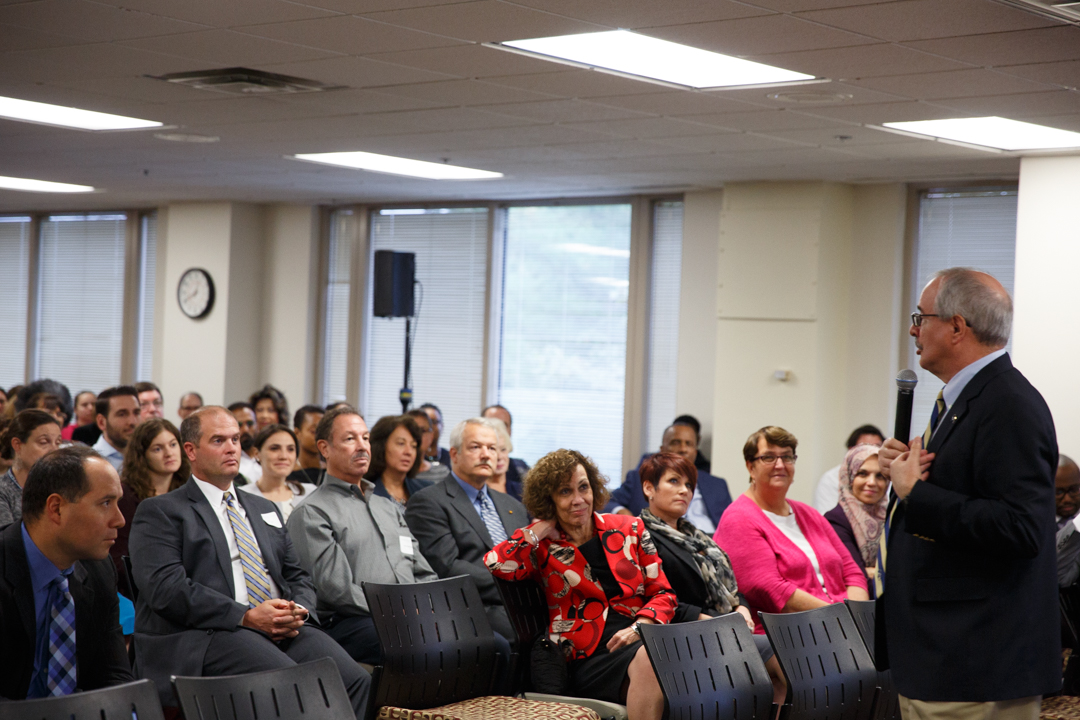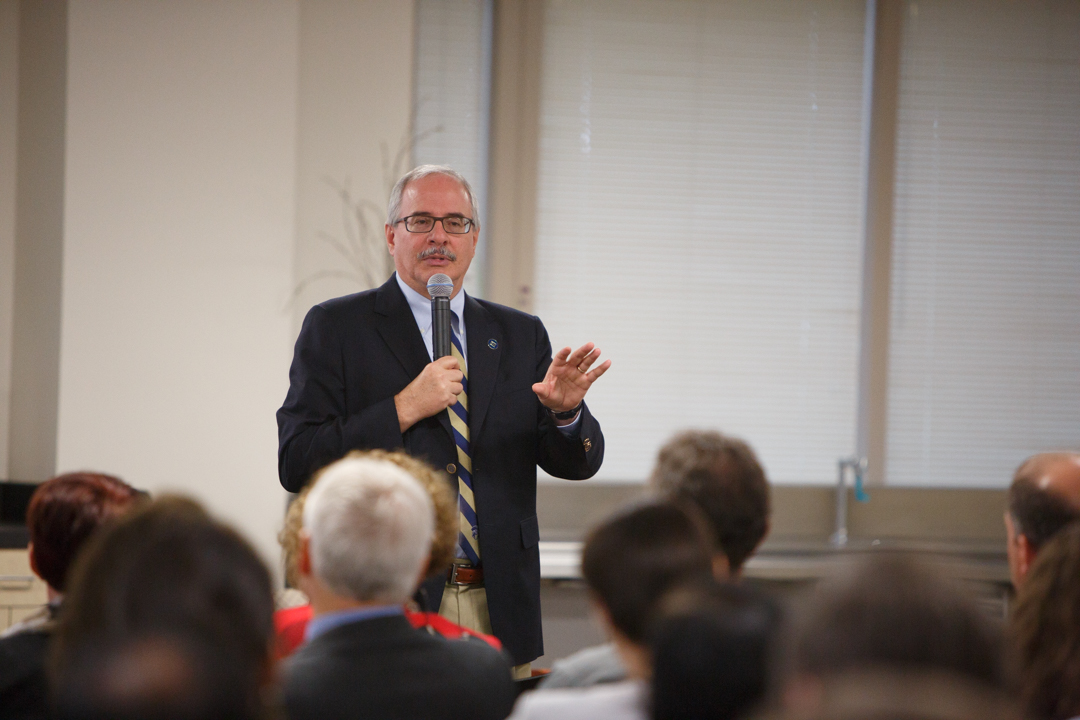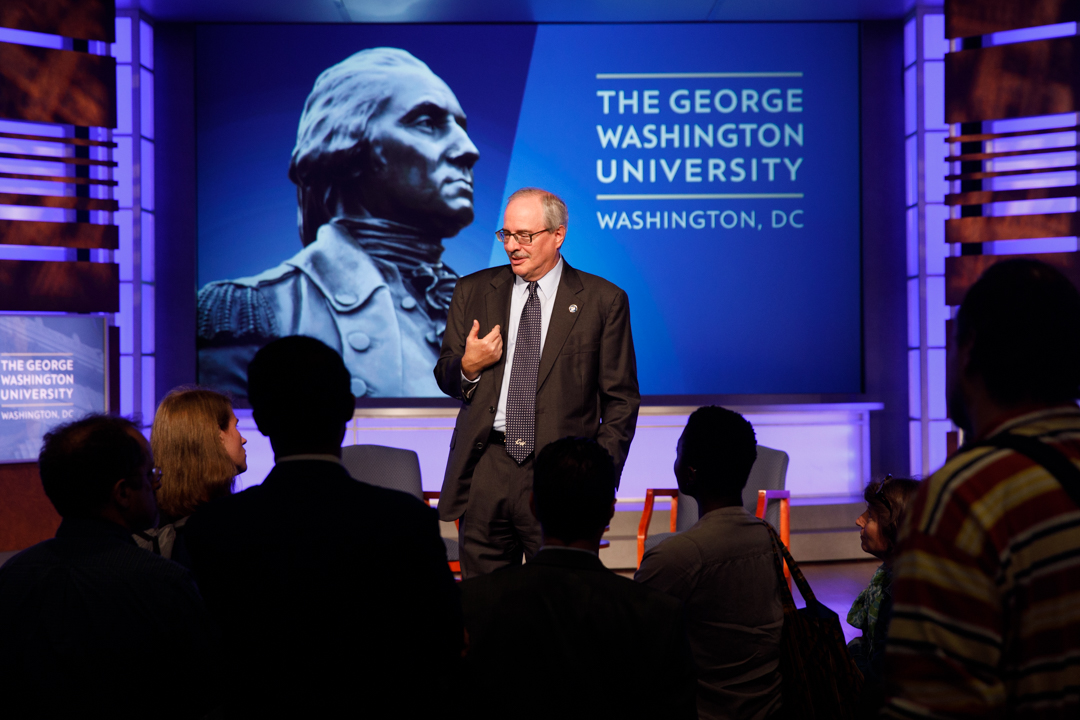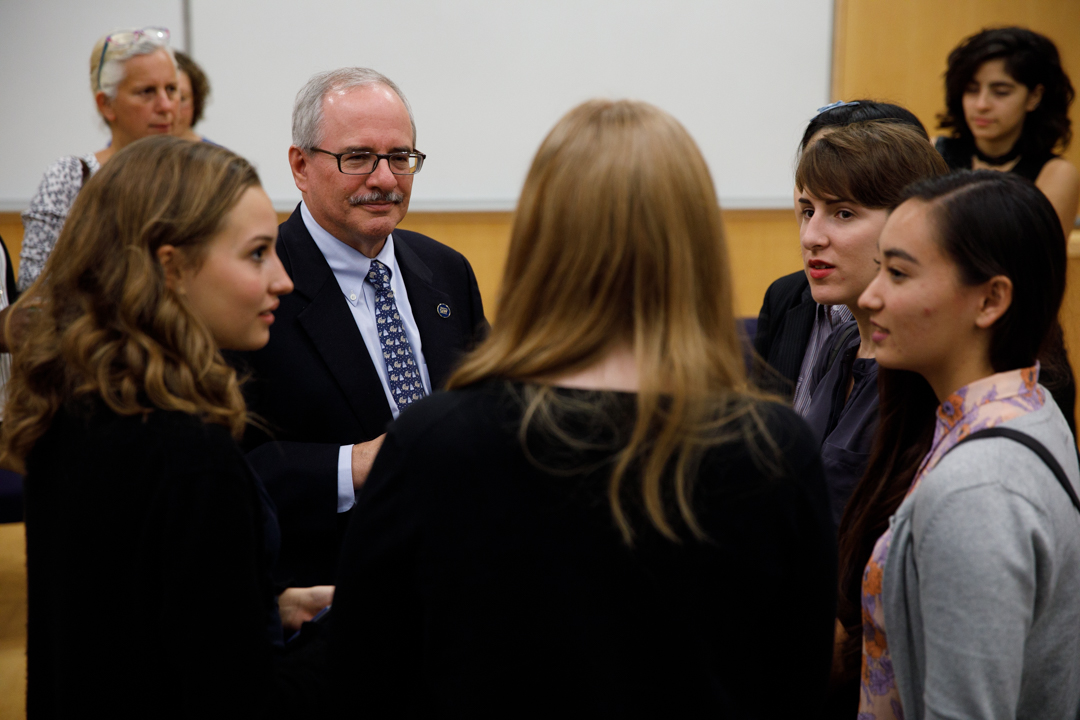By Kristen Mitchell
The programs and schools based on the Virginia Science and Technology Campus all have one important thing in common—they represent some of the most cutting-edge advancements at the university, said George Washington University President Thomas LeBlanc.
Because space on the Foggy Bottom and Mount Vernon campuses is limited, there isn’t much room for expansion in those locations, Dr. LeBlanc said.
“In some ways the Virginia campus is the campus for all new programs, innovations, ideas, whatever it might be,” he said. “The one thing that kind of unifies everything we do out here is a sense of innovation, which I think is a very positive thing.”
Dr. LeBlanc held a community meeting at Enterprise Hall on the Virginia campus Wednesday. After previously meeting with students, faculty and staff on the Foggy Bottom and Mount Vernon campuses, he told attendees that VSTC programs and researchers play an integral role at the university.
The 122-acre Ashburn, Va., campus opened in 1991 and is home to the School of Nursing, cyber security and data science programs, the GW’s High-Performance Computing Laboratory and The Avenir Foundation Conservation and Collections Resource Center. University leaders are working to identify campus goals and what unites the Virginia and Mount Vernon campuses to ensure they do not become a “catch-all for things that don’t fit on Foggy Bottom,” Dr. LeBlanc said.
“We’re trying to figure out first of all, are these campuses fundamental to our future as a university,” Dr. LeBlanc said. “I would say in both cases, so far, my answer would be yes.”

George Washington President Thomas LeBlanc tells faculty and staff on the VSTC that research is a top priority for the university. (William Atkins/ GW Today)
During a Q&A session, faculty and staff at the Virginia campus asked about the role of the campus in the bigger GW environment and the growth of distance learning in graduate education.
GW aspires to preeminence as a comprehensive global research university, Dr. LeBlanc said. Research is a top priority for GW because it keeps classrooms lively and the institution relevant, he said.
“It never occurred to me that the role of research at GW was in question. I always thought of GW as a research university, but I met people here who didn't think it was a settled question,” Dr. LeBlanc said. “What I read both in our history and in my conversations is no, that’s a settled question. We need to stop worrying about that one.”
Investing in research is central to GW’s mission and critical for its survival.
“The research universities are not the ones that are going to fold in the next 50 years. The ones that are going to fold are the ones that are not creating new knowledge, they have a one-dimensional mission of teaching, and I refer to them as the running backs of higher education,” he said. “Running backs are easily replaced in the NFL.”
Dr. LeBlanc also said he wants to better serve the undergraduate student population and improve the student experience. This includes reducing barriers to help students achieve their goals. If GW can improve the undergraduate student experience, Dr. LeBlanc said he believes alumni would be more engaged with the university after they graduate and this would benefit donor development.
In addition, Dr. LeBlanc plans to reexamine the partnership among GW Hospital, the School of Medicine and Health Sciences and the Medical Faculty Associates, which are three distinct corporate entities. The health care landscape has changed significantly since this partnership formed in the 1990s, he said.
He said he also will focus on reforming GW’s institutional culture to make the university less bureaucratic and risk-adverse. GW should be telling students yes more often than no, Dr. LeBlanc said.
“This has to start at the top. If you don’t walk the walk at the leadership level, everything else is just words and you’re wasting your time,” Dr. LeBlanc said. “I’m going to be focused on this effort because if it isn't a presidential initiative, then it isn't a serious institutional initiative.”




